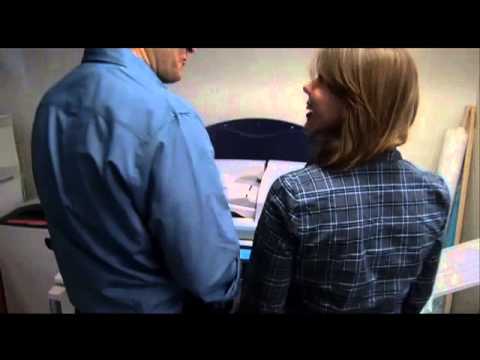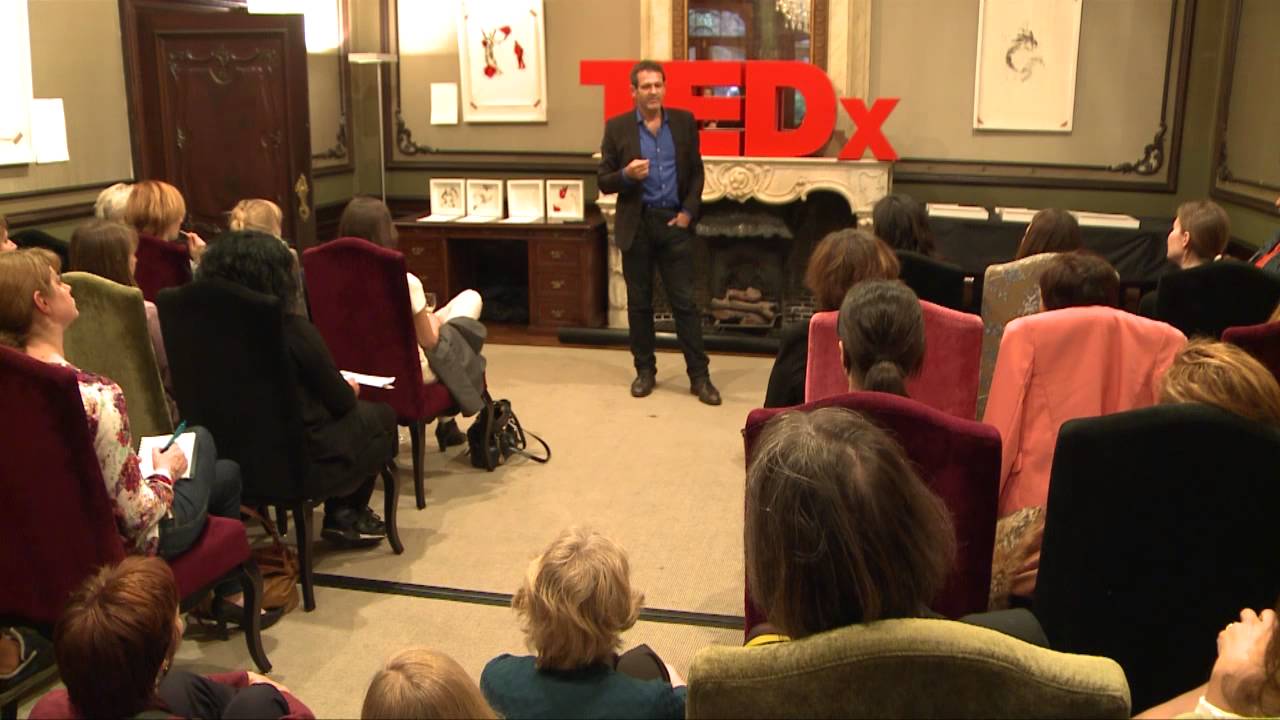Copywriting – 4 Techniques to Write Persuasive Copy
Writing a piece of persuasive copy is art. But if you can master it, it will change your business.
Copy is what creates transformation in your audience
Sonia Simone, Copyblogger.com
Here’s what a persuasive copy can do for your business:
- Increase sign-ups for your email list;
- Increase sales for your ebook or online course;
- Bring in clients;
- Support your ads in achieving their objective.
Here are 4 techniques to write persuasive copy according to copyblogger.com:
1. The Hook or The open loop technique
The open loop technique is a way to grab attention quickly and hold it while you provide the surrounding facts, lessons, or supporting evidence.
Brian Clark, Copyblogger.com
This technique works because it keeps your audience on the edge of their seats to find out what happens in the end.
The latest example of a piece of content using the open loop technique I came across is this 2864-word 13-minute read Medium published article: The Woman They Turned Away.
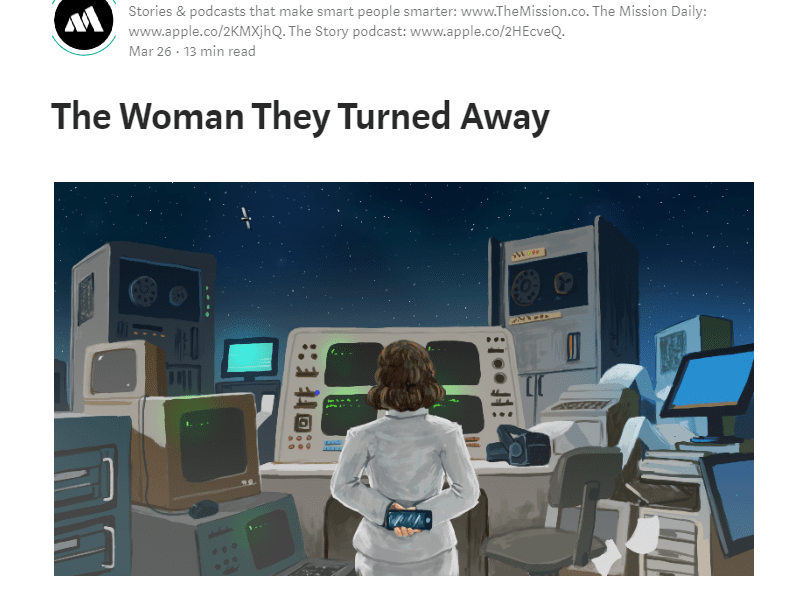
The majority of content pieces published nowadays are a 5-minute read max because people don’t have the patience to read such long-form content.
And yet here I was glued to my monitor, completely oblivious to everything going on around me in the office (colleagues talking, phones ringing etc). I was hooked by the first paragraph. Of course the title helped as well.
This is The Story… of how one woman’s demons almost killed her. It’s how she faced a destroyer that would devour all… and lived to tell the tale. Along the way, she managed to create many of technologies that we use on a daily basis.
I won’t disclose the subject of the article because I want you to discover it yourself. I will just comment upon this first paragraph and give you 3 arguments why it is an incredible piece of writing.
- It doesn’t say who this woman is until the last paragraph. Yes, you need to read 2864 words to learn her name! Curiosity? Check!
- It’s emotional because it mentions personal struggles which we all fight within ourselves. Emotional connection? Check!
- It talks about a life journey and hints to a hero story. Happy-end conclusion? Check! Happy-ends are so satisfying, who doesn’t like them?
Does it make you want to find out who this woman is?
Yes, it does!
2. The Storytelling Setup
It begins in your childhood when you listen to your grandfather’s stories of his adventures as a young man. You listen to him speak of old times with bright eyes and his stories spark your imagination.
There is a reason why stories fascinate us: according to brain scans, stories activate various areas of the cortex that are known to be involved in social and emotional processing.
Storytelling has played an important part in our evolution as human beings. It is the oldest social and cultural activity which humans have ever taken part in with the purpose to learn, connect with each other and inspire future generations.
Make your copy persuasive by using a storytelling setup: talk about your product, service or offer from a personal perspective, give details about how you or your hero felt and said.
This technique is powerful because it builds trust and connection with the reader, it talks about the reader’s pain point with empathy and elicits an I feel exactly the same reaction from him or her.
It’s engaging because it influences the reader in a non-salesy manner.
Here’s an example from The J. Peterman Company, a vintage clothing online store, describing a blue 1940’s dress:
source: jpeterman.com
STORY
Man Seeking Woman.
Between the ages of 25 and older.
Attractive, confident, stylish. Has known at least one positive male role model. Must like French cooking, Etta James, Broadway, movies made between 1937 and 1962, disturbing literature, spirited horses. Ability to pack light. Open to impromptu world travel.Willing to be seen in this. Often.
1940s Cord Dress (No. 2856). Shawl collar, three-quarter length sleeves with turned back cuff. Ultraplush 21-wale cotton corduroy. Large self-fabric belt with buttons down the front. Made for snappy dialogue and romantic innuendo. What you wear when you have all the best lines. Work, parties, dinner, dancing, slow fade. Imported.
Perfect!
3. Analogies
To persuade your audience, first you need to make sure your audience understands what you are communicating.
Brian Clark
To create effective understanding, use analogies.
Why?
Because your audience will arrive at the intended understanding on their own. It is much more powerful to allow them to think on their own than to tell them what to think.
To make sure your analogy makes, not breaks your copywriting, you need to understand your audience’s background.
Here is an example of an analogy used by the Ministry of Supply to describe their innovative technology jacket:

4. Contrast
The power of contrast in copy is amazing, because you are actually altering the reader’s perception of the facts, and yet the facts have not changed at all.
Brian Clark
The key to using contrast to your benefit is to identify potential objections that a prospect might have, and then present contrasting illustrations that change their perception of the facts giving rise to that objection.
Contrast can help you increase your conversion rate by overcoming your customer’s objections. Using contrast in your copywriting piece means placing your customer’s objections in an unexpected light helping him see the bigger picture from a different standpoint.
It’s the art of selling mastered by sales experts.
It’s the ace up your sleeve.
It’s the light bulb switching on like you see in cartoons.
Help your audience understand their objections stand between them and their goals. As a result, these objections will suddenly appear less important and easily discarded.
Here are a few examples:
It’s too expensive
When your client must go over budget to buy the house:
“Are you going to let such a small amount stand in the way of owning this fabulous home?”, an example given by Brian Clark.
I don’t need your product, I can do it on my own
When your audience believes they can do it without your product, mention your unique selling proposition like this copy for a copywriting online course (via crazyegg.com):

source: crazyegg.com
Wrapping up
Benefits of using persuasive copy:
- Grab your audience’s attention quickly;
- Get them hooked on your piece of content;
- Spark your audience’s imagination with storytelling;
- Build connection and trust;
- Help them understand with analogies;
- Support your audience to overcome their objections through contrast.
How To Avoid The Professional Burnout
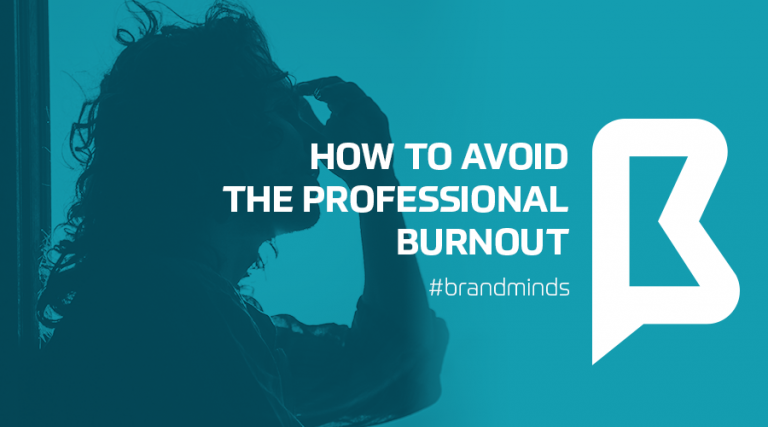
When one is passionate about their job, when one is a high-achiever, one tends to ignore the fact that they’re working exceptionally long hours, taking on exceedingly heavy workloads and putting enormous pressure on themselves to excel—all of which make them ripe for burnout.
According to psychologytoday.com, burnout is a state of chronic stress that leads to: physical and emotional exhaustion, cynicism and detachment, feelings of ineffectiveness and lack of accomplishment. In the state of full-fledged burnout, one is no longer able to function effectively on a personal or professional level. However, burnout doesn’t happen overnight, our bodies and minds do give us warnings, and if you know what to look for, you can recognize it before it’s too late. More about the stages of a burnout and its signs one can read here.

But what can we do to avoid reaching this state? According to Christina Maslach and Michael P. Leiter in their book “The Truth About Burnout: How Organizations Cause Personal Stress and What to Do About It”, when burnout occurs, three things happen: you become chronically exhausted, cynical and detached from your work and you feel increasingly ineffective on the job.
An idea would be to try and be more optimistic and make sure you don’t fall on a pessimistic slide, or, if you have the necessary means, just try a vacation. Realistically speaking though, things are not as easy as they seem, hence the problem creeping out on you and making it quite a big issue.
Pay attention to the voice in your head. When it starts describing negative events as permanent, pervasive or personal, correct yourself. By remembering the 3 P’s (permanence, pervasiveness and personal) and flipping the script, Martin Seligman, author of “Learned Optimism: How to Change Your Mind and Your Life” says you can make yourself more optimistic over time.
Increase your social activity. Spend time with friends, they will bring a balance into your life. As shown by bakadesuyo.com, when the American Medical Association surveyed top doctors to find out how they avoided burnout, one of the key things mentioned was “sharing issues with family and friends.”
Increase your self-efficiency. Paula Davis-Laack, JD, MAPP, an internationally-published writer who travels the globe as a stress and resilience expert, wrote for Psychology Today that self-efficacy is having the belief in your own ability to accomplish (and exercise control over) personally meaningful goals and tasks. People who have a stronger level of perceived self-efficacy experience less stress in challenging situations, and situations in turn become less stressful when people believe they can cope (Albert Bandura, 1989).
Have creative outlets. Burnout interferes with your ability to perform well, increases rigid thinking, and decreases your ability to think accurately, flexibly, and creatively. Even if you aren’t able to flex your creative muscles at work, having some type of creative outlet will keep you engaged and motivated.
Take care of yourself. Make sure you always put yourself first and don’t forget what is important to you and your life. Moreover, pay attention to your health and the outside-work life. Our bodies aren’t machines and one has to remember that things will still be here to be done after taking a much-needed break.
Start saying “no” from time to time. Don’t be afraid to say no. Every “yes” you say adds another thing on your plate and takes more energy away from you.
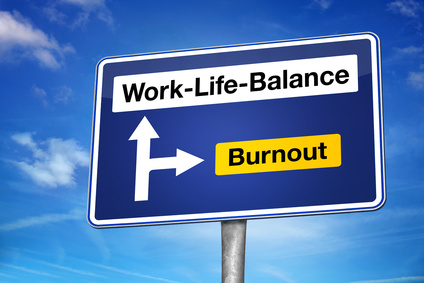
Get support where you can find it. The number of people who say they have no one with whom they can discuss important matters has nearly tripled in the past two and a half decades. The more depressed or into-work people get, the more they tend not to speak with other people or spend time with others, considering they are always under-time pressure or with a deadline hanging over their head. It’s a state one must make sure he / she doesn’t get stuck into.
According to http://99u.com, to help relieve pressure, schedule daily blocks of downtime to refuel your brain and well-being. It can be anything from meditation to a nap, a walk, or simply turning off the wifi for a while.
Concentrate on positive emotions. Studies show that increasing your diet of positive emotion builds your resilience, creativity and ability to be solution-focused, things that are in short supply if you feel like you’re burning out. I made it a point to start noticing when people did things well (and told them so), and I tried to stop being so hard on myself. Aim for a ratio of positive emotions to negative emotions of at least 3:1, which is the tipping point to start experiencing increased resilience and happiness (Fredrickson, 2009).
Limit your contact with negative people. Hanging out with negative-minded people who do nothing but complain will only drag down your mood and outlook. If you have to work with a negative person, try to limit the amount of time you have to spend together.
Make friends at work. Having strong ties in the workplace can help reduce monotony and counter the effects of burnout. Having friends to chat and joke with during the day can help relieve stress from an unfulfilling or demanding job, improve your job performance, or simply get you through a rough day.
Take time off. If burnout seems inevitable, try to take a complete break from work. Go on vacation, use up your sick days, ask for a temporary leave-of-absence—anything to remove yourself from the situation. Use the time away to recharge your batteries and pursue other burnout recovery steps. Entrepreneurs or freelancers can be especially prone to burnout. Joel Runyon plays “workstation popcorn,” in which he groups tasks by location and then switches, in order to keep work manageable, provide himself frequent breaks, and spend his time efficiently.

Set boundaries. Don’t overextend yourself. Learn how to say “no” to requests on your time. If you find this difficult, remind yourself that saying “no” allows you to say “yes” to the things that you truly want to do.
Nourish your creative side. Creativity is a powerful antidote to burnout. Try something new, start a fun project, or resume a favorite hobby. Choose activities that have nothing to do with work.
Set aside relaxation time. Relaxation techniques such as yoga, meditation, and deep breathing activate the body’s relaxation response, a state of restfulness that is the opposite of the stress response.
Get plenty of sleep. Feeling tired can exacerbate burnout by causing you to think irrationally.
Avoid nicotine. Smoking when you’re feeling stressed may seem calming, but nicotine is a powerful stimulant, leading to higher, not lower, levels of anxiety.

